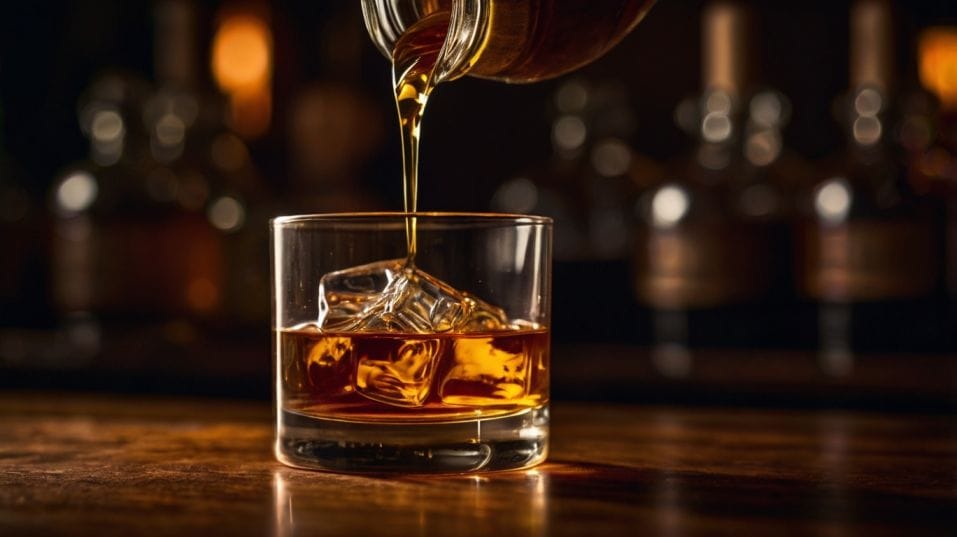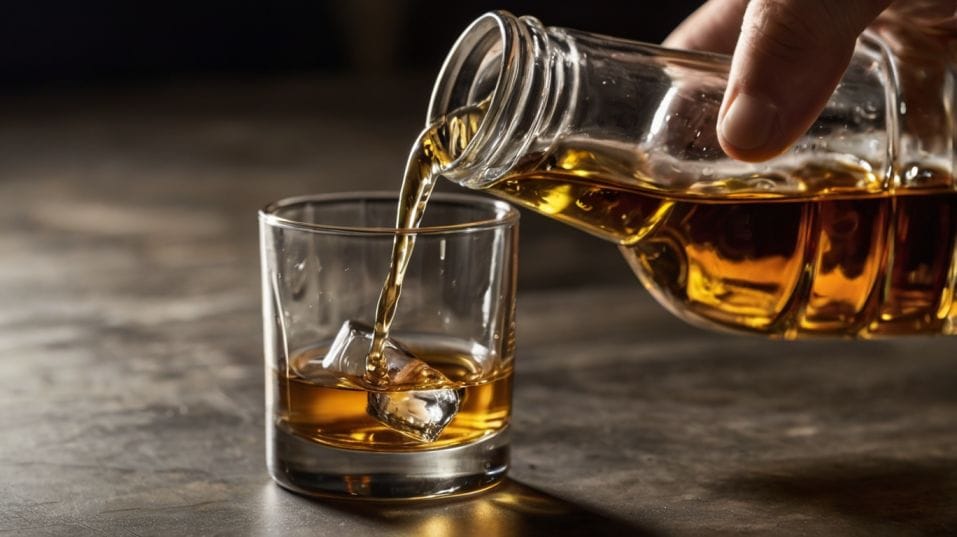Should You Add Water to Your Whiskey?
Curious about adding water to whiskey? Discover how it transforms flavor, boosts your palate, and helps you drink smarter—not weaker.

Ever wonder if a splash of water could make your whiskey better—or just ruin it? If you're new to whiskey, this question hits fast. Some say it’s sacrilege. Others say it’s the secret to unlocking flavor. The truth lies in the chemistry.
A few careful drops can reshape a pour, revealing hidden notes and softening harsh edges. Done right, adding water isn’t watering down. It’s leveling up how you taste.
What Happens When You Add Water?
At its core, whiskey is a complex mix of alcohol, water, and volatile compounds—things like esters, phenols, fatty acids, and aldehydes. These are the building blocks of flavor and aroma.
Many of them sit dormant when whiskey is bottled at higher proof. When you add a bit of water, you're not just diluting the spirit—you’re triggering a reaction.
Some molecules shift. Others float to the surface. Aromas bloom. Harshness fades. The entire profile reshapes itself.
This isn’t just sensory fluff. It’s chemistry. Studies in food science and sensory analysis have shown that certain whiskey compounds become more detectable at lower concentrations of ethanol.
That means: water helps your nose and palate pick out more detail. Fruit notes can leap forward. Spice rounds out. Peat smoke unfurls into something less aggressive, more textured.
But don’t confuse this with watering down your whiskey into oblivion. The goal isn’t to erase strength—it’s to unlock nuance.

Proof and Personality
A lot of whiskeys you’ll try—especially those above 46% ABV—are bottled at higher strength for good reason.
They offer richness, texture, and intensity that gets stripped away when watered too far. But they also come with heat. Astringency. Alcohol vapor that can overwhelm subtle notes.
This is where water becomes a tool, not a crutch. You’re taking control. Think of high-proof whiskey like a raw audio file—it’s got depth, but it’s unedited.
A few drops of water is the equalizer. It smooths the distortion, adjusts the balance, brings clarity.
Lower-proof whiskeys—typically around 40–43% ABV—are usually “pre-diluted” to what distillers believe is a drinkable balance. But that doesn’t mean they’re finished products. Even here, a drop or two can shift the focus.
You might unearth a shy fruit note, or take the sting off the finish. Tasting side-by-side, before and after, teaches you to sense the spectrum inside the bottle.
How to Add Water the Right Way
If you’re going to use water, do it with purpose. That means not just how much you add, but what you add and how you deliver it. Every step affects the outcome—starting with the water itself.
Use Clean, Neutral Water
Precision matters. Don’t just pour from a glass of tap water and hope for the best. Start with clean, neutral water—preferably soft spring water or filtered water, room temperature. Avoid mineral-heavy water; it can clash with delicate flavors.
Add a Few Drops at a Time
Use a straw, a dropper, or even the tip of a spoon. Add just a few drops. Swirl. Nose it again. Taste. Then decide: add more, or not? You’re calibrating, not guessing. You’re teaching your palate how whiskey behaves.
Take your time between sips. Let the whiskey sit. With each change, your nose recalibrates. What felt sharp at first might now seem balanced.
A note you couldn’t name might suddenly click—citrus zest, toasted almond, white pepper. This is how tasting turns into learning.
Not Every Pour Needs It—But Every Drinker Should Try
There’s no hard rule that says you must add water. Some whiskeys don’t benefit from it. A soft, floral Lowland malt at 43% might be fully open right out of the bottle.
A younger bourbon might lose its structure when diluted, revealing a weak or disjointed finish. But even if you end up preferring your whiskey neat, learning how water affects flavor is essential. It trains your palate.
It sharpens your ability to spot quality. Over time, you’ll get better at predicting how a whiskey will evolve—whether in the glass, in the bottle over weeks, or on your shelf for years.
And when you’re collecting, that insight becomes gold. You’ll know which cask-strength single malts need breathing room.
Which high-rye bourbons explode with a splash. Which overhyped bottles fall flat no matter how you adjust them. That’s the difference between buying bottles and building a collection.
Water as a Tasting Technique
Water doesn’t just change how whiskey tastes—it can also change how you evaluate whiskey. Used strategically, it helps reveal hidden details and creates a fairer, more focused tasting experience.
Use Water to Benchmark Whiskeys
There’s another benefit to using water—benchmarking. If you’re tasting multiple whiskeys side by side, a few drops of water can help you level the playing field.
Stronger whiskeys often dominate your senses, making it harder to evaluate lighter pours fairly. By softening the edges, you create space for complexity to show up across the board.
Learn Like a Blender
This is especially helpful at whiskey tastings, or when comparing styles—peated vs. unpeated, sherry-matured vs. bourbon-matured, grain vs. malt. Water won’t make them equal, but it will make their personalities easier to understand.
Even seasoned blenders use this approach. They nose and taste at different dilutions to isolate how components behave. You don’t need lab tools—just the curiosity to experiment, and the discipline to notice what changes.
Water and the Culture of Whiskey
Here’s where it gets tricky. For some, adding water feels like breaking a rule. Maybe they’ve heard that “real” whiskey drinkers take it neat. Maybe they’re worried about looking amateurish. That mindset is outdated.
The truth? Knowing when—and how—to add water shows you’re paying attention. It means you’re not just drinking whiskey. You’re learning it.
Exploring it. Tasting with purpose. That’s what separates someone who sips casually from someone who drinks like they mean it.
Every master distiller will tell you the same thing: taste it the way you like it, but know why you like it that way. Water helps you figure that out.
Final Thoughts
If you want to get more out of every glass of whiskey, learn to use water with skill. Don’t add it blindly. Don’t avoid it out of habit. Use it to explore, to calibrate, to understand what makes a good whiskey great.
Tonight, pour something with a little backbone. Add a drop. Swirl. Breathe it in. Taste it again. What changed? What opened up? What surprised you?
This is how serious drinkers are made. Not by memorizing labels—but by paying attention, and tasting like it matters. Start building that habit today.




